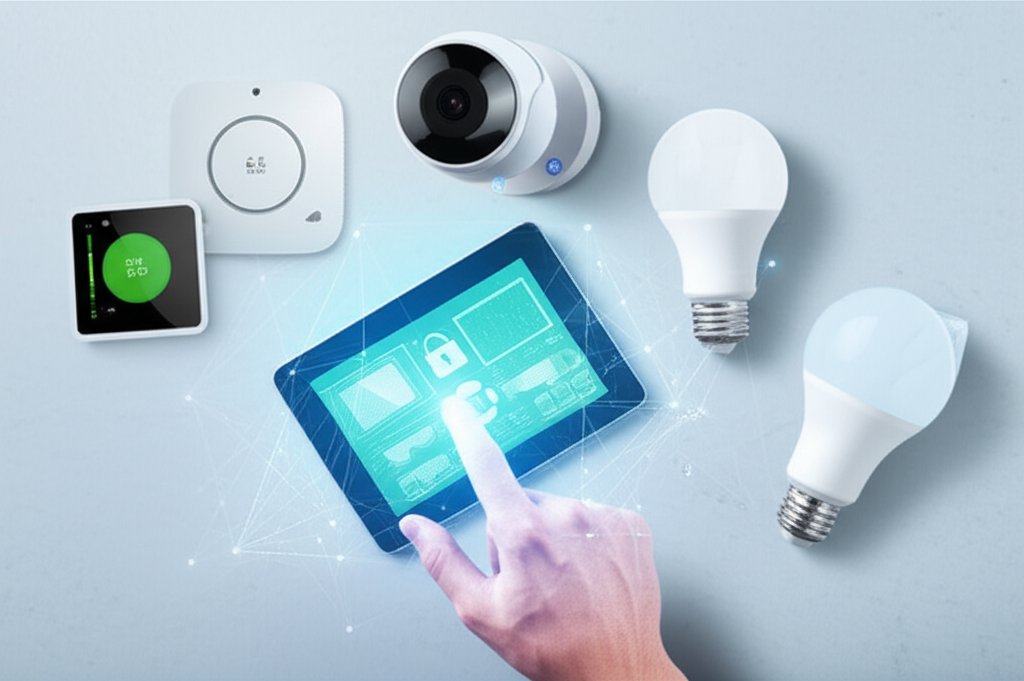In our increasingly connected world, protecting your digital life isn’t just for tech gurus or massive corporations. It’s for everyone. With cyber threats becoming more sophisticated and personalized—phishing attacks alone accounting for over 40% of all cyber incidents in recent years—relying solely on generic cybersecurity advice is like wearing a one-size-fits-all helmet. It might offer some protection, but it won’t truly fit your unique head. That’s where building a personal threat model comes in. It’s not as complex as it sounds, I promise.
As a security professional, I’ve seen firsthand how effective a tailored approach can be. This isn’t about fear-mongering; it’s about empowerment. It’s about understanding what truly matters to you in your digital world, who might want to harm it, and how you can actually stop them. So, let’s dive in and learn how to build a robust defense for your personal and professional digital life.
What Exactly is a Personal Threat Model? (And Why You Need One)
At its core, a personal threat model is your personalized cybersecurity blueprint. It’s a structured way for you to think like a digital detective, proactively identifying and prioritizing the digital risks that are most relevant to your specific online presence and activities. Why do you need one? Because your digital life is unique. The assets you value, the people you interact with, and the information you share are different from anyone else’s. Consider, for example, the digital risks of a social media influencer, whose primary concern might be account hijacking or reputational damage, versus a small business owner, who must safeguard client contracts, payment data, and intellectual property. Generic advice, while helpful, can’t address these individual nuances. This process helps you move from passively reacting to threats to actively taking control of your digital security. The following steps will guide you through the process of building your own personal threat model, equipping you with the practical tools and knowledge to secure your digital world effectively.
Step 1: Understanding & Mitigating Privacy Threats
Our digital footprint grows daily, and with it, the potential for privacy threats. These aren’t always malicious hackers; sometimes it’s overzealous data collectors, or even just public information you didn’t realize was accessible. We’re talking about everything from pervasive online tracking to the risk of doxxing – where your personal information is published publicly. It’s a vast landscape.
To mitigate these, we need to be proactive. This requires actively adjusting browser privacy settings, being mindful of the data you share (and with whom), and recognizing that every click can have consequences. Staying informed about new tactics, like sophisticated phishing scams, is also crucial. Ultimately, it’s about making informed, conscious choices to protect your sensitive information.
Step 2: Fortifying Your Digital Gates with Password Management
Think of your passwords as the keys to your digital kingdom. Weak, reused, or easily guessed passwords are like leaving your front door unlocked. Identity thieves and opportunistic attackers thrive on this vulnerability. Strong, unique passwords for every account aren’t just a recommendation; they’re the bedrock of your digital defense. But how are you supposed to remember dozens of complex, distinct passwords?
This is where password managers become your best friend. Services like 1Password, LastPass, Bitwarden, or Dashlane securely store and generate unique, strong passwords for you, streamlining your login process. They encrypt your password vault, meaning only you can access it with your master password. Implementing a password manager is a non-negotiable step toward building serious cybersecurity, or considering options like passwordless authentication for even greater security and convenience.
Step 3: Adding Layers with Two-Factor Authentication (2FA/MFA)
Even with a strong password, there’s always a chance it could be compromised. This is precisely why multi-factor authentication (MFA), often referred to as two-factor authentication (2FA), is so vital. It adds a second layer of verification beyond just your password. If an attacker compromises your password, 2FA acts like a deadbolt requiring a fingerprint, a code, or a physical key, vastly complicating their efforts.
How do you set it up? For critical accounts like email, banking, and social media, look for “Security Settings” or “Login & Security” options. You’ll typically find an option to enable 2FA using a code from an authenticator app (like Google Authenticator or Authy), a text message to your phone, or a physical security key. Authenticator apps are generally preferred over SMS for better security. Activating MFA wherever it’s offered is a straightforward yet incredibly effective way to enhance your digital safety.
Step 4: Securing Your Connection with VPN Selection
When you’re browsing the internet, especially on public Wi-Fi networks at coffee shops, airports, or hotels, your data is often exposed. Without protection, anyone with even basic technical know-how can potentially snoop on your activity. This is where a Virtual Private Network (VPN) comes in. It creates an encrypted tunnel between your device and the internet, masking your IP address and scrambling your data so others can’t see what you’re doing. Think of it as having a private, secure lane on the internet highway, protecting your traffic from onlookers.
Choosing a VPN requires a bit of thought. Look for providers with a strong no-logs policy (meaning they don’t record your activity), robust encryption standards (like AES-256), a wide selection of servers, and a good reputation for privacy and customer support. While free VPNs exist, they often come with hidden costs, such as selling your data. For serious privacy on the go, investing in a reputable paid service is almost always warranted.
Step 5: Communicating Securely with Encrypted Apps
Think about how much sensitive information you share through messaging apps and email. If these aren’t encrypted, your private conversations are vulnerable to interception and unauthorized reading. End-to-end encryption (E2EE) ensures that only the sender and intended recipient can read the messages – not even the service provider can. This capability is critical for maintaining confidentiality and integrity in both personal and business communications.
For messaging, consider apps like Signal, which is widely praised for its strong, open-source E2EE. WhatsApp also offers E2EE, though its parent company (Meta) raises privacy concerns for some. For email, services like ProtonMail offer encrypted email by default. To avoid critical email security mistakes, consciously choose and utilize these tools to build a more secure perimeter around your digital conversations, effectively protecting them from prying eyes.
Step 6: Hardening Your Browser & Digital Footprint
Your web browser is your main gateway to the internet, and it can be a significant source of privacy leaks if not properly configured. Many common browsers, by default, collect data, track your activity, and can be vulnerable to malicious scripts. Taking control here means making deliberate choices and proactive adjustments.
Start by reviewing your browser’s privacy settings – block third-party cookies, limit tracking, and consider using a browser like Brave or Firefox with privacy-focused extensions (e.g., uBlock Origin, Privacy Badger). Ditch default search engines for privacy-focused alternatives like DuckDuckGo. Also, practice data minimization: don’t sign up for services with your primary email unless necessary, and be judicious about what personal information you offer up online. The less data you leave scattered across the web, the smaller your digital footprint becomes, significantly reducing your attractiveness as a target for data harvesters and attackers.
Step 7: Navigating Social Media Safely
Social media platforms are fantastic for connecting with friends and family, and for businesses, they’re essential marketing tools. However, they’re also prime hunting grounds for identity thieves, scammers, and those looking to gather personal information for malicious purposes. What you post, who you connect with, and even seemingly innocuous details in your profile or pictures, can all be leveraged against you.
Regularly audit your privacy settings on all social media accounts. Limit who can see your posts, photos, and personal details. Be wary of quizzes or games that ask for personal information. Think critically before sharing your location in real-time or posting about upcoming travel plans, which can signal an empty home to potential criminals. For small businesses, ensure your social media managers are well-versed in security best practices and understand the risks of business impersonation or account takeover.
Step 8: The Ultimate Safety Net: Secure Backups
No matter how many layers of defense you put in place, there’s always a chance that something could go wrong. Your device could fail, a virus could encrypt your files, or a malicious actor could delete your data. This is why secure, regular backups are your ultimate safety net. It’s about ensuring that even when the worst happens, your precious digital assets are recoverable, minimizing disruption and loss.
For personal users, this means backing up photos, important documents, and critical files to an external hard drive, a reputable cloud service (with encryption), or both. For small businesses, a robust backup strategy is even more critical. This often involves automated, off-site backups of customer databases, financial records, and operational data. A highly recommended standard is the 3-2-1 rule: maintain three copies of your data, on two different types of media, with at least one copy stored off-site. While implementing this might seem tedious, it is unequivocally the single most effective safeguard against catastrophic digital disaster.
Integrating Threat Modeling Principles into Your Routine
We’ve covered a comprehensive set of actionable steps. Now, let’s tie it all back to the core concept of a personal threat model. It means consistently applying the principles of identifying your “digital crown jewels,” unmasking potential adversaries, mapping out “what if” scenarios, and then constructing the digital defenses we’ve just discussed. Your digital life is ever-changing, so your security posture should be too, perhaps even by embracing Zero Trust principles. Learning to build and refine your model isn’t a one-time task; it’s an ongoing, adaptive journey.
Regularly review your digital habits. Did you get a new smart device? Start a new online service for your business? Each change introduces new potential threats and assets to protect. By consistently asking those threat modeling questions – What do I protect? Who from? How? What if? – you’ll continually enhance your proactive security mindset. This holistic approach is what truly boosts your overall cybersecurity.
Threat Modeling in Action: Real-World Scenarios
Let’s make this more concrete with a couple of examples:
Example 1: The Social Media Savvy Individual
Digital Crown Jewels: Extensive social media profiles, personal photos shared online, online reputation.
Adversaries: Online bullies, identity thieves seeking personal info, data brokers, disgruntled former acquaintances.
Threats: Account takeover, doxxing (publishing private info), privacy breaches from oversharing, reputational damage.
Mitigations:
- Password Management & 2FA: Strong, unique passwords and 2FA on all social accounts.
- Privacy Settings: Strict privacy settings on all platforms, limiting who sees posts and profile info.
- Social Media Safety: Careful consideration of what’s shared; avoiding revealing locations or sensitive personal details.
- Browser Hardening: Using privacy-focused browser settings and extensions to limit tracking.
Example 2: The Online Freelancer / Small E-commerce Shop Owner
Digital Crown Jewels: Client contracts, payment processing information, website data, business email, customer list, intellectual property. When working remotely, it’s especially important to fortify your remote work security.
Adversaries: Cybercriminals (ransomware groups, phishing gangs), competitive intelligence seekers, rogue employees, opportunists.
Threats: Ransomware attacks encrypting business data, business email compromise (BEC) leading to financial fraud, website hacks, customer data leaks, intellectual property theft.
Mitigations:
- Password Management & 2FA: Mandatory for all business accounts (email, banking, website backend, payment gateways).
- Encrypted Communication: Using secure platforms for client communication and sensitive file sharing.
- VPN Selection: Using a VPN when accessing business tools or client data from public Wi-Fi.
- Secure Backups: Implementing automated, off-site backups of all critical business data.
- Device Security: Encrypting laptops and devices, keeping software updated, using antivirus/anti-malware.
- Phishing Awareness: Training (even self-training) to recognize and report suspicious emails.
Conclusion: Take Control of Your Digital Destiny
While building a comprehensive personal threat model might initially seem daunting, it is genuinely the most effective and personalized approach to protecting your unique digital life. It is about shifting from a reactive stance to a proactive one, empowering you to take decisive control in a digital world that can often feel overwhelming, perhaps even exploring the power of decentralized identity for ultimate digital control. Remember, this isn’t an all-or-nothing endeavor. You don’t have to implement every suggestion overnight. Start small: pick one area, such as password management, and tackle it diligently. Then, progressively move to the next. Every conscious step you take makes you significantly more secure, more confident, and more resilient against the ever-evolving digital threats we all face.
Protect your digital life! Start with a password manager and 2FA today.









